 Asset Publisher
Asset Publisher
Areas of protected ecology
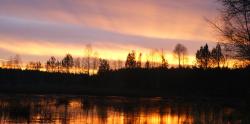 Użytek ekologiczny. Fot. Sebastian Zapolski
Użytek ekologiczny. Fot. Sebastian Zapolski
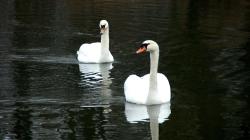 Łabędzie na jednym z użytków ekologicznych. Fot. Sebastian Zapolski
Łabędzie na jednym z użytków ekologicznych. Fot. Sebastian Zapolski
 Użytek ekologiczny. Fot. Sebastian Zapolski
Użytek ekologiczny. Fot. Sebastian Zapolski
 Bagna w starym dorzeczu Bobru. Fot. Sebastian Zapolski
Bagna w starym dorzeczu Bobru. Fot. Sebastian Zapolski
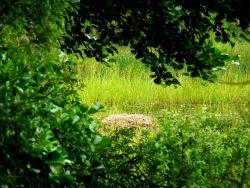 Gniazdo żurawia. Fot. Jerzy Wilanowski
Gniazdo żurawia. Fot. Jerzy Wilanowski
Areas of protected ecology are usually small – little ponds, woodlots, peat bogs, marshes and dunes. They are remains of ecosystems that enable preservation of biological diversity. Currently there are 9 000 areas of protected ecology all over the country with total area of almost 30 000 ha.
Szprotawa Forest District includes 3 areas of protected ecology covering total area of 45.74 ha. The areas are:
- Sowie Bagno (Owl's Bog) – it is located in Małomice commune and forest range. It is a boggy land full of small ponds. The area is covered with bushes and trees, including such species as Oak, Hornbeam, Linden, Poplar and Willow. Interesting plant species, such as Hare's-tail Cottongrass, Common Cottongrass and Common Sundew can be found there.
- Żurawie Bagno (Crane's Bog) – it is located in Małomice commune, in Śliwnik Forest Range. It is a bog with standing water – a habitat for wetland plants, breeding and living place of many species of birds and a hunting ground for White-tailed Eagle.
- Łabędzie Stawy (Swan Ponds) – located in Małomice commune, Śliwnik Forest Range. The area includes an open space within a complex forest area with high plants typical of standing water. It is a breeding place and habitat of Crane, Mute Swan and other marshbirds as well as a hunting ground for White-tailed Eagle.
 Asset Publisher
Asset Publisher
 Asset Publisher
Asset Publisher
Forests of our Forest District
Forests of our Forest District
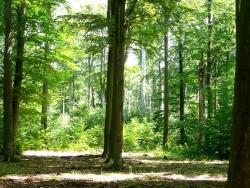 Lasy Nadleśnictwa. Fot. Jerzy Wilanowski
Lasy Nadleśnictwa. Fot. Jerzy Wilanowski
 Piękne lasy Nadleśnictwa. Fot. Jerzy Wilanowski
Piękne lasy Nadleśnictwa. Fot. Jerzy Wilanowski
 Bór iglasty. Fot. Jerzy Wilanowski
Bór iglasty. Fot. Jerzy Wilanowski
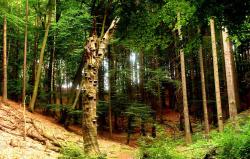 Rezerwat przyrody "Annabrzeskie Wąwozy". Fot. Jerzy Wilanowski
Rezerwat przyrody "Annabrzeskie Wąwozy". Fot. Jerzy Wilanowski
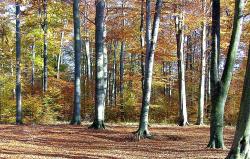 Krajobraz leśny. Fot. Jerzy Wilanowski
Krajobraz leśny. Fot. Jerzy Wilanowski
Szprotawa Forest District Inspectorate includes two Sub-districts – Szprotawa and Małomice – and manages a total area of over 19 000 ha. Its share of forested areas is only 28.2% making it the lowest ratio in the entire Regional Directorate of the State Forests in Zielona Góra. Forests managed by the Inspectorate include forests maintained for industrial purposes, protected forests and reserves.
Landscape of the Forest District is very heterogeneous.The area of Szprotawa Sub-district and the southern part of Małomice Sub-district is quite monochromatic, whereas the northern part of Małomice Sub-district is known for its undulating landscape (end moraine) at places turning into hills.
Geological structure
The Forest District is located within the area of Middle Polish Glaciation, in Mazovia-Podlasie Stadial.It is dominated by geological deposits originating from the Tertiary and the Quaternary, such as:fluvioglacial sands and gravels, river sands and gravels and boulder clay and sand.
Types of forest habitats
Forest habitats of the Forest District consist mainly of mixed and coniferous forests, with a small share of riparian forests and alder forests.Pine is the most common tree and the entire forest ecosystem consists in 60% of this species.The second most common species is Oak followed by Alder.
Plants and animals
Forests of Szprotawa Forest District are home to a variety of plant and animal species, including those under strict and partial protection.There are over 20 protected plant and lichen species in the District, including:Common Cottongrass, Common Toothwort, Marsh Gentian, Purple Foxglove, Yellow Iris, Stiff Clubmoss or Usnea Filipendula.
Mammal species includeWild Boar, Roe Deer, Deer, Fox, Raccoon Dog, Badger, Marten and Hare.Forests of Szprotawa Forest District are also inhabited by rare invertebrate species, including 9 species included on the Polish Red List of Animals.The species are:Medicinal Leech, Great Capricorn Beetle and Lucanus Cervus.
Apart from the protected invertebrate species there is a large number of amphibian and reptile species.The most interesting species includeViviparous Lizard, Smooth Snake and European Tree Frog.
Birds inhabiting the district also include many rare and endangered species:Black Stork, Whooper Swan, Wood Sandpiper, Eurasian Pygmy Owl, Boreal Owl and the pride of the District – White-tailed Eagle.






![„Naplotkowała sosna, że już się zbliża wiosna.[…] A wiosna przyszło pieszo - Już kwiaty z nią się śpieszą, Już trawy przed nią rosną I szumią: „Witaj wiosno!”. Jan Brzechwa - Przyjście Wiosny](/documents/1226291/0/Wiosna+1.jpg/8e6d02a0-5ffe-d486-49c3-5fac2b3b23c1?t=1711109156614&width=42)


